'Superstition swallows everything and examines nothing.':
Tacitus.
Thanks to Dick Osseman for his critically important photos: his website.
Dick Osseman says that in Syria there are ruins called Dead Cities dotted across the landscape. He states 800 such locations exist. The six he recorded in the Osseman Collection are Antecedent1. The structures are typical freestone construction using massive stone blocks too large for economical use by ancient civilizations. The bleak terrain where some are located causes one to wonder what economic activity produced resources to pay for construction. One suggestion is plasma levitation technology reduced costs significantly. The gravity's charge on building costs eliminated the stoop labor component. The 800 cities plus those in eastern Turkey indicate an extensive population, probably approaching modern numbers, in the area before z-pinch destruction. The figure must have declined by ninety percent. Those who survived the ZPA faced famine from the disruption of agriculture and trade. The Z-pinch Aurora (ZPA) left only the skeletons of cities.

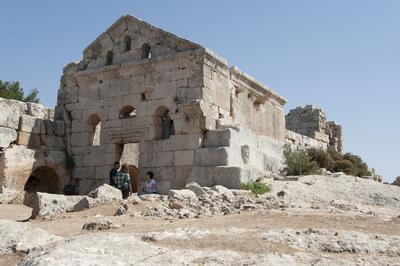
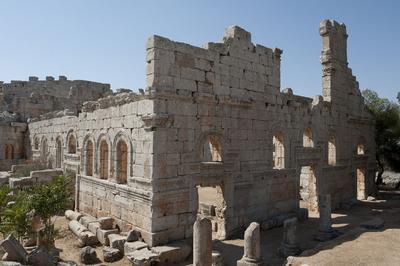
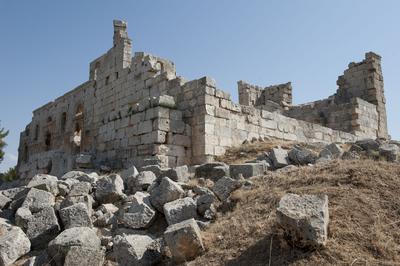
Figure 1: dosseman: The barren landscape around St Simeon in Syria looks very similar to mountain tops in Sardinia. Blocks lie scattered about the structures where fading plasma levitation deposited them 12,000 years ago. Plasma blunted their sharp corners and edges. For hundreds of years pilgrims stepped over the wreckage; blocks were too large to deal with. Little has changed since the Great Technology Reset (GTR) occurred.

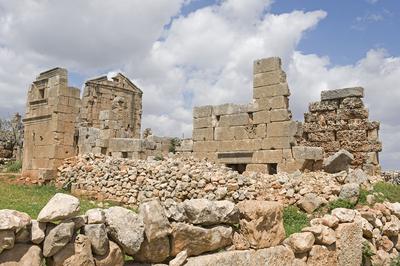
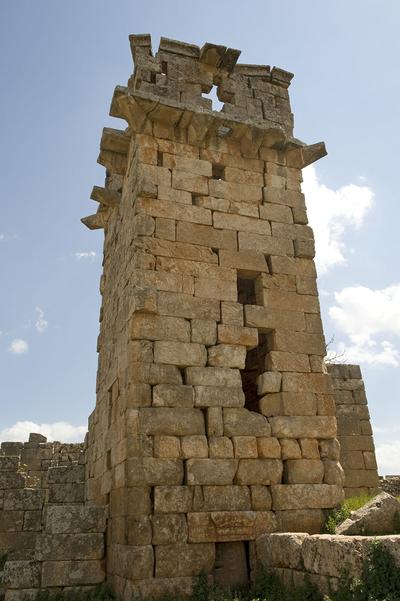
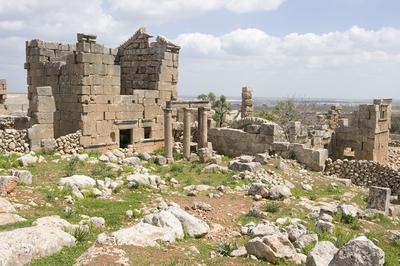

Figure 2: dosseman: Jeradeh, another dead city has changed little. All of the cities are mostly debris fields. People modified the ruins with field stone and manual labor. Apparently, the soil creation process of the ZPA connections did not occur. How much soil existed before and after the GTR?
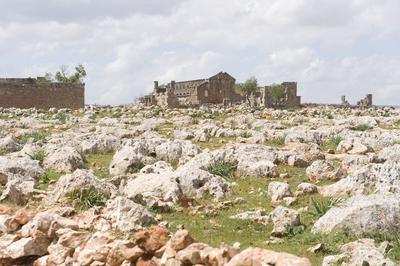
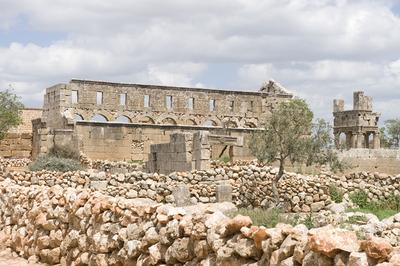

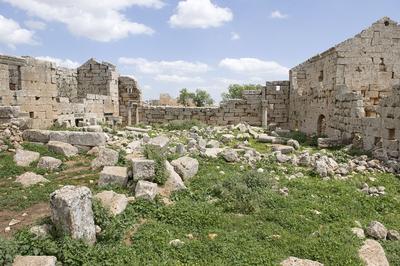
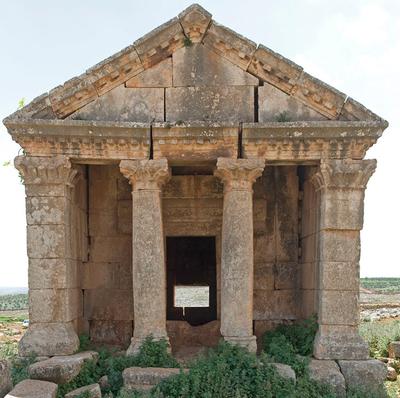
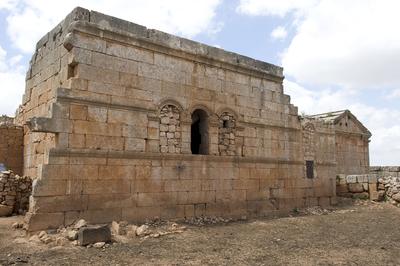
Figure 3: dosseman: City of Ruweiha is like the others.
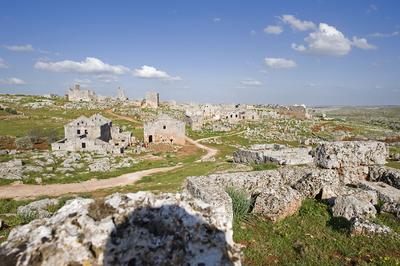
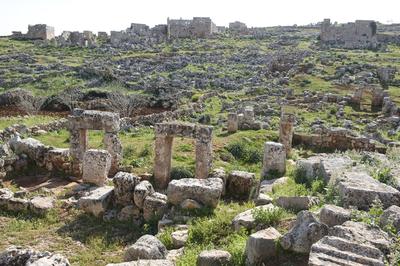

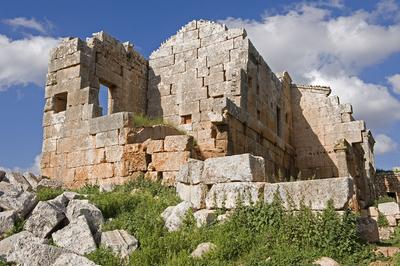
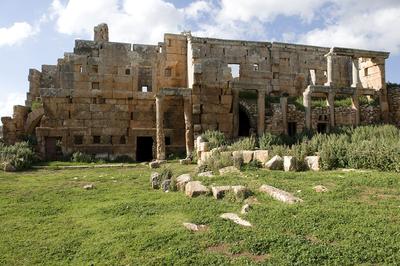
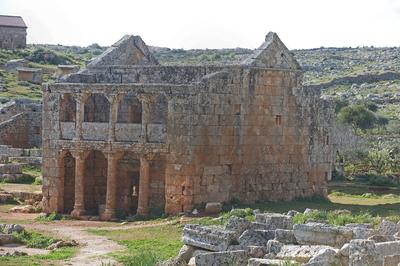
Figure 4: dosseman: Serjilla.

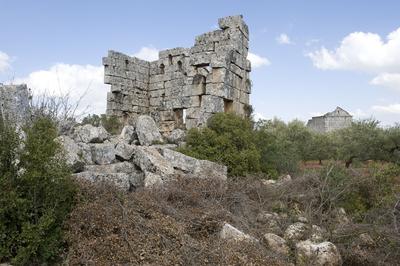
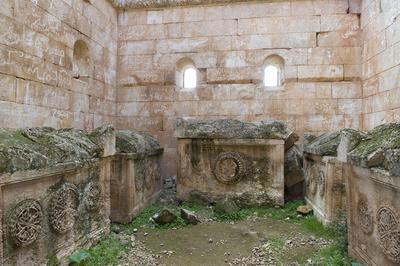
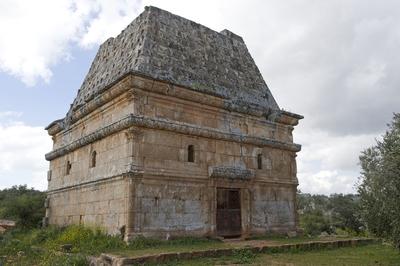
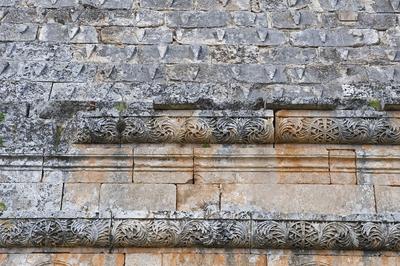
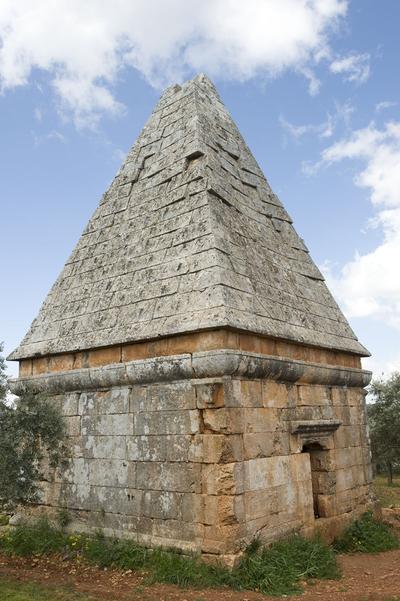
Figure 5: dosseman: Al-Bara
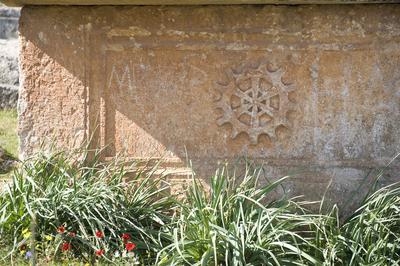
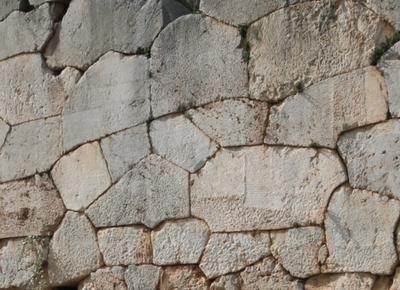

Figure 6: dosseman: The Serjilla gear and images from Unfinished Obelisk in Egypt and polygonal wall at Delphi Greece. An abrader was used to grind down rock around the obelisk after exposure to plasma. At Delphi, the same technique was used to polish rock. Such devices needed gears and electric motors .
An earlier article noted Michael T. Wright's important contribution to understanding Antecedent technology. He hand crafted a copy of the Antikythera Mechanism from corroded remains found off that island. A major part of his reconstruction was replicating gears. The above vault is emblazoned with a gear. Its occupant probably owned an equipment manufacturing shop. Gears were a necessary component to make abrasion devices for use on stone, fig.6. The gear probably symbolized a range of mechanical devices made by the deceased. After the GTR, metal devices not related to agriculture were broken down for their metallic content. Surviving chaos and famine, not moving stone blocks, were the primary challenges.
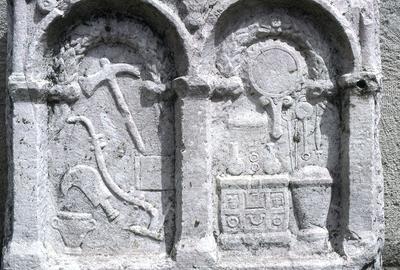
Figure 7: Osseman: Left panel is a plow and other items
Grave stone, fig.7, may have been for a merchant with some of his
products. Between the hammer and 'sickle' is a very crude plow. For all
their technical prowess, Antecedents put no effort into creating a more
effective agricultural tool. They had the oxen and horses to pull
heavier plows. The plow's small point indicates metal was controlled by
some means.
Items on the right side are female knickknacks with a mirror placed in
prominent position. It's possession must have indicated higher status.
It looks like a pair of spectacles between the vases. Above the basket
is a long thin needle similar to one seen in a Dick Osseman museum
image.
The prominent position of a 'hammer' like device and the mirror seems to indicate metal was a premium material. The largest metal objects on sarcophagi were swords. Nude males wore them on leather straps over their shoulders. The hammer and mirror took more metal than the plow's tooth so they received prominence. Metal could be controlled by restricting investment in production. Limiting productivity maintained the status quo by restricting invention and innovation. They probably thought their massive stone structures sufficient to survive a return of the ZPA. A stiff price was extracted from Antecedents by the ZPA for this folly. Suppressing invention and innovation had severe consequences. Those two treasures of human achievement might have originated defenses against the z-pinches.
All old sites documented by Dick Osseman were occupied by Antecedents and some later reoccupied by ancients because the locations facilitated economic activity. Antecedents were the same people more or less speaking and writing the same languages with the same religions and literature. Both groups used the same trade routes converging on same trading hubs like Petra and Palmyra conveying the same products to meet same demand. The Great Technology Reset was just a brutal interruption to this activity.
They are St. Simeon, St. Simeon the Younger, Jeradeh, Ruweiha, Serjilla, Al-Bara↩︎

